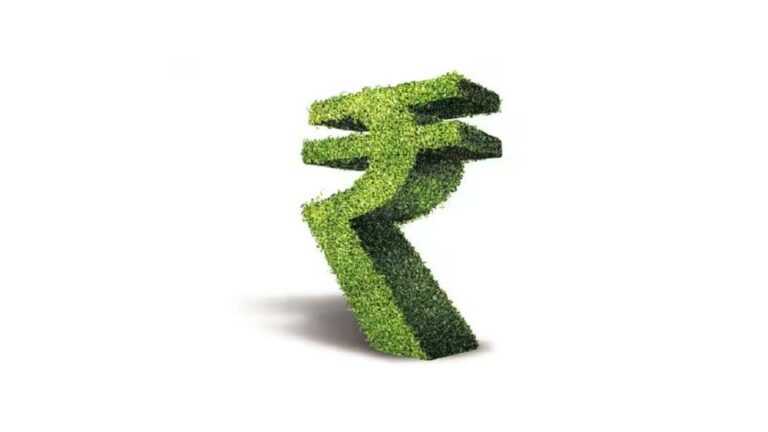Permitting FIIs to invest in India’s green projects broadens the capital base required to meet the country’s ambitious 2070 net-zero targets. This strategy aligns with India’s commitment to sourcing 50 per cent of its energy from non-fossil fuel sources and reducing the carbon intensity of its economy by 45 per cent, as pledged by Prime Minister Narendra Modi at COP26 in Glasgow in 2021.
On April 5, 2024, in a significant boost to India’s green initiatives, the Reserve Bank of India (RBI) approved investments in the country’s Sovereign Green Bonds (SGrBs) by Foreign Institutional Investors (FIIs) operating within the International Financial Services Centre (IFSC). This pivotal decision enhances India’s efforts towards sustainability and expands financing options for eco-friendly and environmentally sustainable projects across the country.
Permitting FIIs to invest in India’s green projects broadens the capital base required to meet the country’s ambitious 2070 net-zero targets. This strategy aligns with India’s commitment to sourcing 50 per cent of its energy from non-fossil fuel sources and reducing the carbon intensity of its economy by 45 per cent, as pledged by Prime Minister Narendra Modi at COP26 in Glasgow in 2021.
Green bonds are financial products issued by various entities like companies, nations, and multilateral organizations, dedicated solely to funding projects with positive environmental or climate impacts. They offer investors fixed-income returns while supporting initiatives like renewable energy, sustainable transportation, and eco-friendly construction projects.
Between 2008 and 2020, the World Bank emerged as a significant player in green bond issuance, with a total of $14.4 billion dedicated to funding 111 projects worldwide. These initiatives primarily focused on renewable energy and efficiency (33 per cent), clean transportation (27 per cent), and agriculture and land use (15 per cent). Additionally, by the conclusion of 2020, 24 national governments collectively issued Sovereign Green, Social, and Sustainability bonds amounting to $111 billion.
Finance Minister Nirmala Sitharaman, in the 2022-23 Union Budget, revealed the government’s initiative to issue SGrBs to accelerate funding for various projects. These projects aim to harness offshore wind energy, produce grid-scale solar power, and promote the transition to battery-operated electric vehicles.
On November 9, 2022, the Finance Ministry unveiled India’s inaugural SGrB Framework, specifying the types of projects eligible for funding through this new class of government securities. These projects include investments in small-scale renewable energy sources such as solar, wind, biomass, and hydropower (under 25 MW) that integrate energy generation and storage. Additional projects encompass public lighting improvements, such as LED replacements, the construction of new low-carbon buildings, energy-efficiency retrofits for existing buildings, and initiatives to reduce electricity grid losses. The framework also highlights support for public transportation, subsidies for electric vehicle adoption, and the development of charging infrastructure.
To ensure alignment with international standards, the government sought an evaluation from Cicero, a Norway-based validator, comparing India’s SGrB Framework against the International Capital Market Association’s (ICMA) green principles. Cicero rated India’s framework as “medium green” with a score of “good governance.” To effectively utilize the proceeds from these green bonds, it is crucial to identify new, high-impact green projects with credible audit trails, particularly those that have attracted limited private investment, such as Distributed Renewable Energy and clean energy transition finance for Micro, Small, and Medium Enterprises (MSMEs).
In January and February 2023, the RBI issued SGrBs worth Rs 16,000 crore in two tranches, set to mature in 2028 and 2033. Both issuances were oversubscribed, with the primary participants being domestic financial institutions and banks. This trend has narrowed the government’s borrowing avenues. Additionally, these green government securities (G-Secs) were classified under the Statutory Liquidity Ratio (SLR), a liquidity requirement set by the RBI that financial institutions must maintain before lending to their customers.
SGrBs yield lower interest rates compared to conventional G-Secs, with the interest differential, termed as the ‘greenium,’ representing the cost banks incur by investing in them. However, central banks and governments globally are promoting financial institutions to embrace ‘greeniums’ to expedite the transition to a more sustainable future. Allowing FIIs to invest in India’s green G-Secs could be highly beneficial for the country. FIIs are seeking to diversify their green investment portfolios, supported by substantial regulatory backing, especially in developed nations. This presents an opportunity for FIIs to invest in India’s green G-Secs. Additionally, FIIs may aim to enhance their green credentials when such investment opportunities are limited in their home markets. India’s implementation of the Sovereign Green Bonds Framework in late 2022 has effectively mitigated concerns about greenwashing, further attracting FII interest.
Audacious Attempt
The RBI’s move to permit FIIs in the IFSC to invest in SGrBs strongly aligns with India’s sustainability objectives by facilitating increased funding for environmentally responsible projects, bringing forth several noteworthy implications. Firstly, it broadens the pool of investors for SGrBs, potentially drawing in more capital for green initiatives within India. Secondly, it enhances the Climate Bonds Market by enticing a varied spectrum of investors keen on environmentally sustainable ventures. Lastly, this decision fosters the expansion of green finance within India, bolstering the nation’s strides towards sustainability.
Investing in SGrBs presents numerous advantages, benefiting both investors and India’s sustainability endeavours. Firstly, investors play a vital role in financing initiatives that advance environmental sustainability, such as renewable energy infrastructure and eco-friendly transportation systems. Secondly, despite their eco-focus, SGrBs remain financially rewarding for investors through interest payments. Lastly, the capital raised via SGrBs can be channelled to bolster initiatives in line with India’s Sustainable Development Goals (SDGs), tackling diverse social, economic, and environmental issues, and nurturing a more sustainable tomorrow.
Challenges on the Horizon
The decision by the RBI, although containing some positive elements, underscores a significant deficiency in the absence of dedicated regulations for green bonds. This ambiguity leaves investors without a precise grasp of the financial risks linked to such initiatives. Moreover, the substantial initial expenses tied to issuing green bonds in India pose a considerable barrier to market expansion, despite the promising prospects for long-term savings.
Moreover, the prevalence of greenwashing within the industry remains a concern, with some bonds being labelled as “green” without meeting established criteria. The absence of a standardized method for assessing the environmental credentials of investments further complicates matters. Although the Finance Ministry introduced India’s first SGrB Framework, its effective implementation and enforcement are paramount.
Ensuring that funded projects align with predefined criteria and contribute to environmental sustainability necessitates robust monitoring and evaluation mechanisms. Identifying new green projects with credible audit trails and significant impact is essential for the optimal utilization of SGrB proceeds. However, certain sectors, such as Distributed Renewable Energy and clean energy transition finance for MSMEs, may struggle to attract adequate funding due to limited private capital.
Securing a pipeline of eligible green projects poses a challenge, particularly in sectors like offshore wind, grid-scale solar power production, and Electric Vehicles (EVs). To address this, the government must actively encourage and incentivize the development of such projects to ensure a steady flow of investment opportunities.
Way Forward
Improving transparency in the issuance of green bonds is crucial, along with finding solutions to current challenges. It’s essential to launch specialized awareness campaigns highlighting the benefits of investing in green projects. Creating a favorable environment for private investors by mitigating legal, default, liquidity, and other risks is imperative. Implementing strong legal frameworks to address default situations can enhance investor confidence. Prioritizing the establishment of a green capital pool can boost domestic demand. Integrating green projects into institutional investors’ portfolios, potentially involving Indian institutions like the Insurance Regulatory and Development Authority of India (IRDAI), is essential.


















